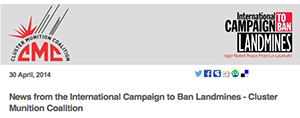Treaty obligations
The Convention on Cluster Munitions includes an obligation never to use, produce, transfer or stockpile cluster munitions. It also includes several positive obligations to ensure no further use and to redress past harm caused by the weapons.
Destroying stockpiles
Under the Convention on Cluster Munitions, States Parties may not stockpile cluster munitions, and must also destroy their existing stocks within eight years of joining. This requirement is the most effective way to ensure that no state that joins the convention will ever use cluster munitions again. In other words, through stockpile destruction, states are taking clear and concrete steps to prevent future cluster munition victims. Indeed the whole nature of the cluster munition ban process is in large part preventive – to ensure that the billions of cluster submunitions held by states around the world are never used.
Stockpile destruction has been one of the biggest successes of the convention so far, with many States Parties already finished destruction and most others with plans to finish long before their deadline.
Detailed information on states’ progress in destroying their stockpiles is available in the latest Cluster Munition Monitor report. Information on individual countries is available in the country profiles section.
Summary of the key convention obligations (Article 3)
All States Parties must destroy all stockpiles of cluster munitions under their jurisdiction and control as soon as possible but no later than eight years after the convention enters into force for the State Party. Should States Parties need additional time to destroy cluster munition stockpiles, a request must be submitted and extensions for a period of up to four years may be granted.
This article allows for the retention of a “minimum number” of cluster munitions and submunitions for training in and development of clearance techniques and counter-measures. It requires detailed annual reporting on the retained munitions.






